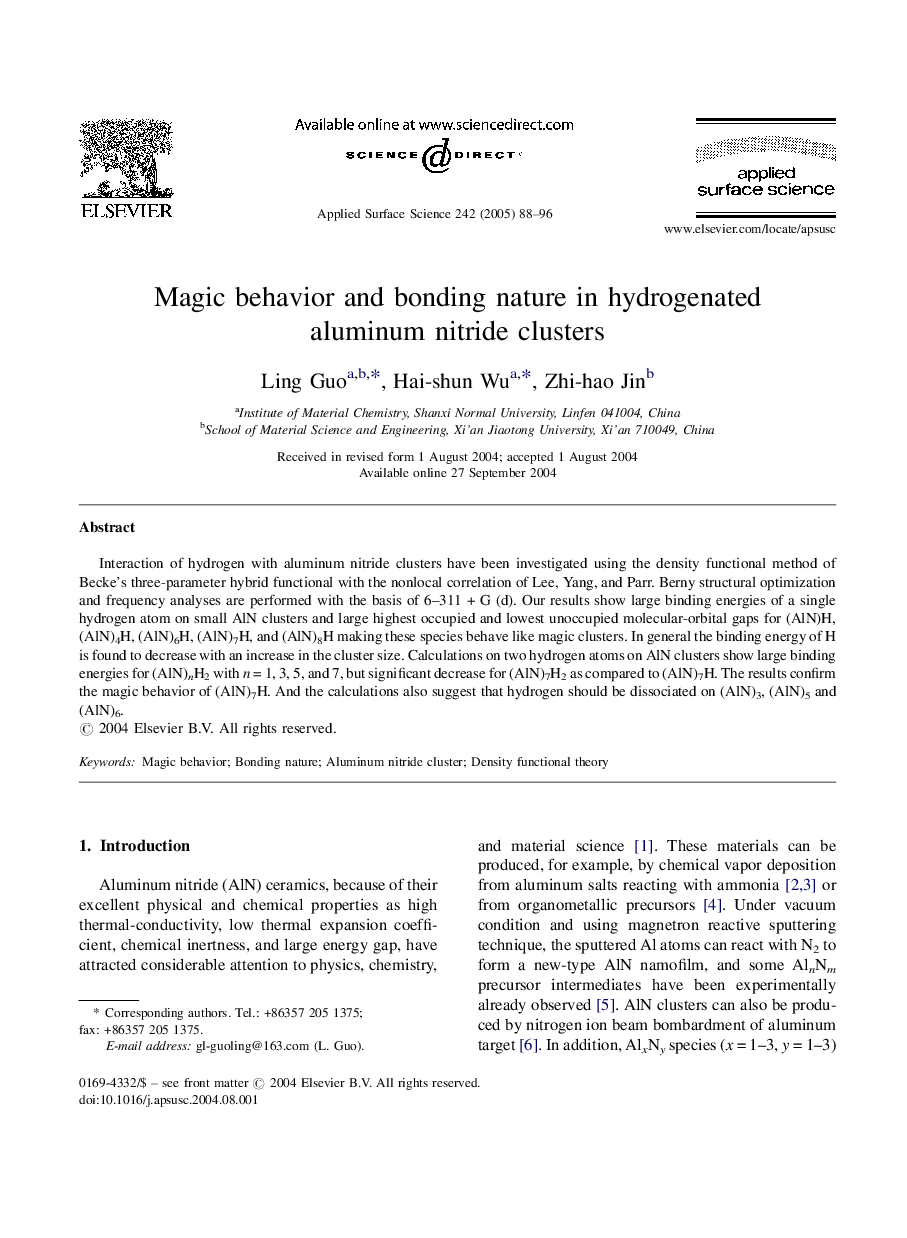| Article ID | Journal | Published Year | Pages | File Type |
|---|---|---|---|---|
| 9566882 | Applied Surface Science | 2005 | 9 Pages |
Abstract
Interaction of hydrogen with aluminum nitride clusters have been investigated using the density functional method of Becke's three-parameter hybrid functional with the nonlocal correlation of Lee, Yang, and Parr. Berny structural optimization and frequency analyses are performed with the basis of 6-311 + G (d). Our results show large binding energies of a single hydrogen atom on small AlN clusters and large highest occupied and lowest unoccupied molecular-orbital gaps for (AlN)H, (AlN)4H, (AlN)6H, (AlN)7H, and (AlN)8H making these species behave like magic clusters. In general the binding energy of H is found to decrease with an increase in the cluster size. Calculations on two hydrogen atoms on AlN clusters show large binding energies for (AlN)nH2 with n = 1, 3, 5, and 7, but significant decrease for (AlN)7H2 as compared to (AlN)7H. The results confirm the magic behavior of (AlN)7H. And the calculations also suggest that hydrogen should be dissociated on (AlN)3, (AlN)5 and (AlN)6.
Related Topics
Physical Sciences and Engineering
Chemistry
Physical and Theoretical Chemistry
Authors
Ling Guo, Hai-shun Wu, Zhi-hao Jin,
